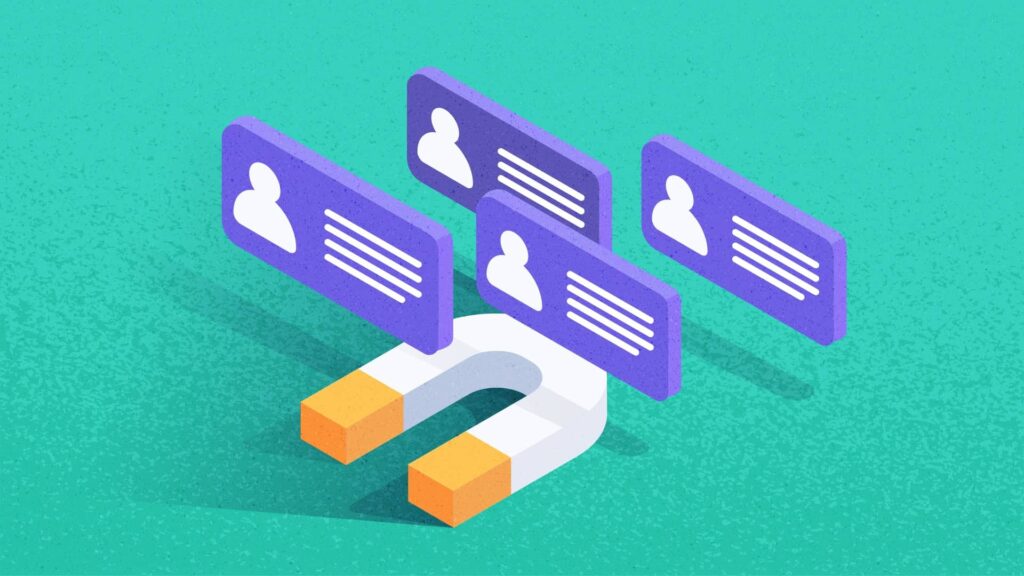An 85% customer retention rate isn’t just a dream—it’s a real target that successful SaaS companies consistently hit and even exceed. It’s also the target to aim for if you’re seeking steady growth and want to meet your annual recurring revenue (ARR) goals.
How? Let’s get right into it.
SaaS Retention FAQs and Metrics
Before we move on to the strategies to boost your SaaS retention rates, let’s quickly give some definitions and answer some questions about customer retention.
What is the customer retention rate?
By definition, the customer retention rate is the percentage of customers that remain with your company over a period of time.
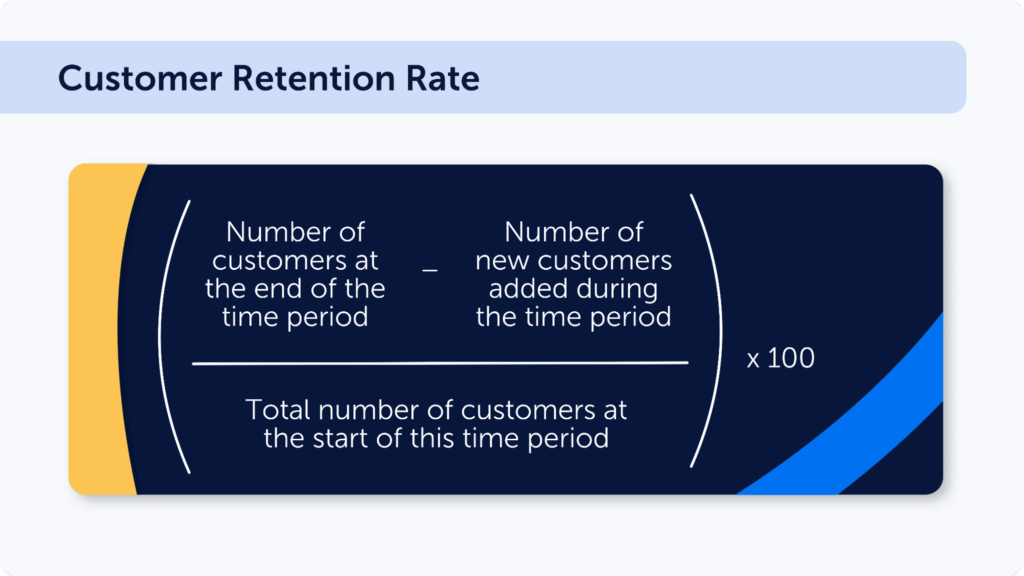
💡It’s always a good idea to analyze your customer retention within specific audience cohorts. The practice is called cohort retention analysis.
Most SaaS companies operate on a subscription model, where customers pay either monthly or yearly. Within this model, the revenue from first-time payments doesn’t initially match the big investment your marketing, sales, and product teams put into landing that customer.
Even customer acquisition cost (CAC) is almost always higher than the first monthly payment you get from this customer.
But as customers stick around, their recurring payments add up, covering those costs and creating a positive return on investment (ROI). That’s why retention is so crucial—without it, your customer acquisition costs could outweigh your profits.
Yet ROI isn’t the only reason to take care of your customer retention:
- High SaaS customer retention signals strong product-market fit. When customers stick around, it means you’re truly fulfilling their needs.
- High retention contributes to expansion. Loyal customers tend to spread the word, whether through direct recommendations to friends or by leaving positive reviews online. A solid pool of happy customers makes it easier for you to attract new ones, cutting your acquisition costs and helping you grow even faster. The rich get richer, eh? That makes maximizing retention one of the most important SaaS marketing strategies.
- High retention looks good in the eyes of investors. If you want to boost your company’s value, focusing on keeping your customers should be one of your first moves. Investors love businesses that are showing stable growth rates and using their resources wisely.
What are the most important retention metrics?
Monitoring customer retention rate is a good start, but you need more metrics to understand the real impact of your retention efforts. So, in addition to the SaaS customer retention rate, here are a few more retention metrics to monitor:
- Customer Churn Rate is the flip side of retention, measuring the percentage of customers who cancel or stop using your service within a given time period.
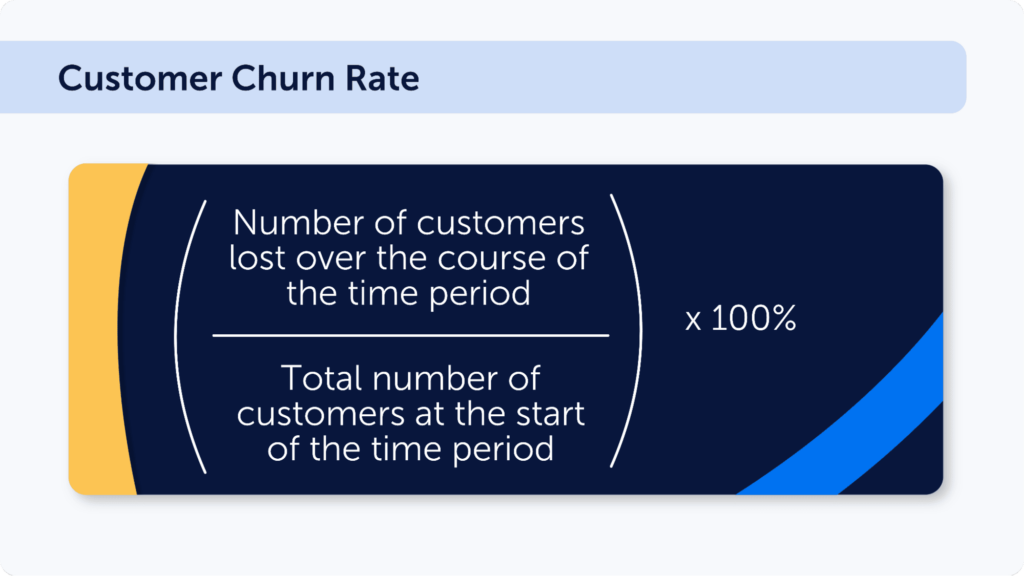
- Customer Lifetime Value (CLTV or CLV) measures the total revenue a customer brings in over their entire relationship with your company.

- Net Revenue Retention (NRR) calculates the percentage of revenue retained over a period of time. It factors in upgrades, downgrades, and churn, helping you understand if your existing customer base is growing or shrinking in value.
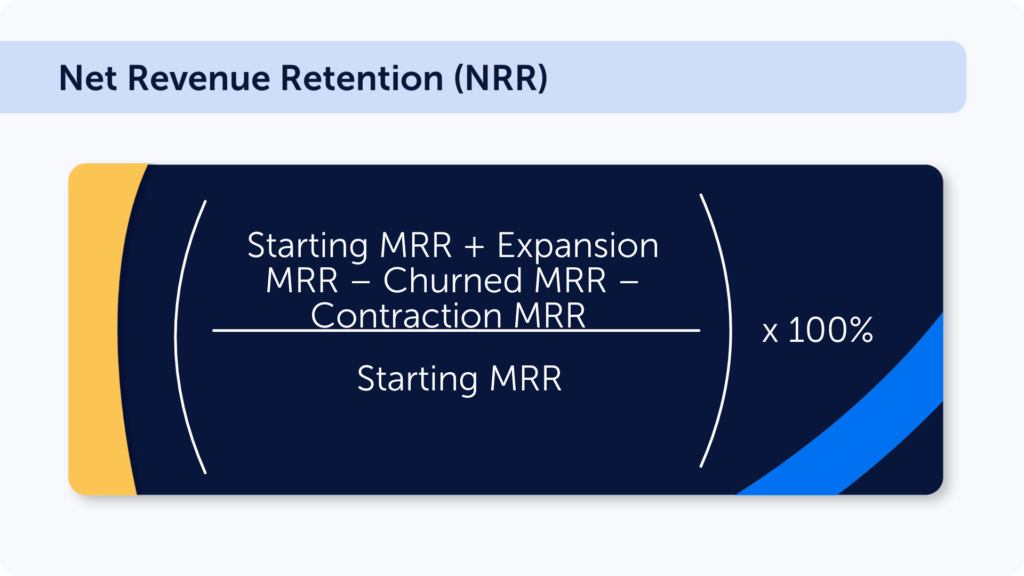
- Gross Revenue Retention (GRR) measures the percentage of revenue retained, excluding the effects of churn and downgrades, over a period of time.

- Renewal Rate tracks how many customers renew their subscription when their contract is up.
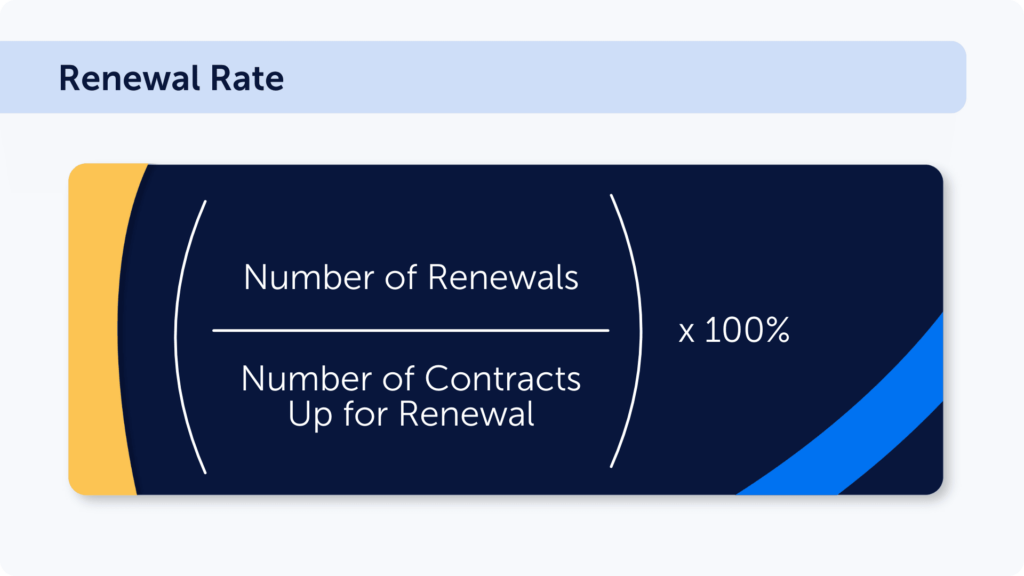
* All MRR metrics should be calculated from the same group of customers as the starting MRR.
Both NRR and GRR let SaaS companies see the impact of their retention efforts on their bottom line.
What is a customer retention curve?
As we’ve already mentioned, it’s convenient to look at retention by cohort. There is a nice visual tool that can help with that – it’s called a customer retention curve.
A customer retention curve is a graph that visualizes retention rate trends for your business over time.
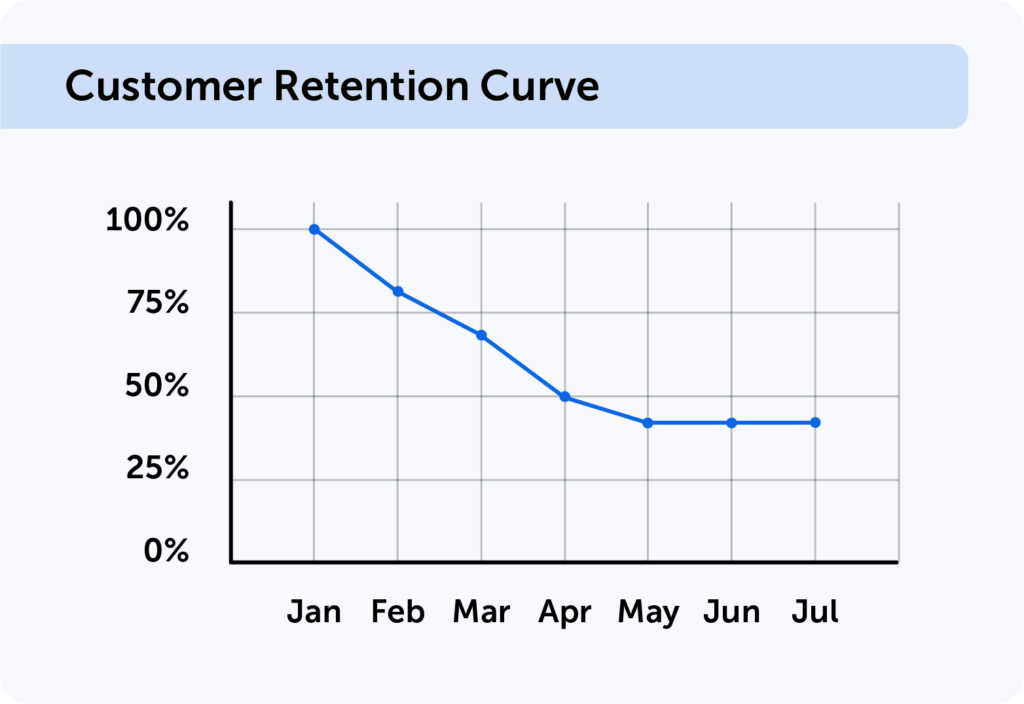
It typically starts with 100% of customers at the beginning (e.g., when they sign up or during a specific cohort’s start period), and then it shows the percentage that stays as time progresses. The curve helps you see how quickly or slowly customers churn and helps to identify periods when it stabilizes or drops significantly.
What is a good SaaS customer retention rate?
According to the SaaS Retention Report, top-performing SaaS companies have retention rates between 72% and 88%.
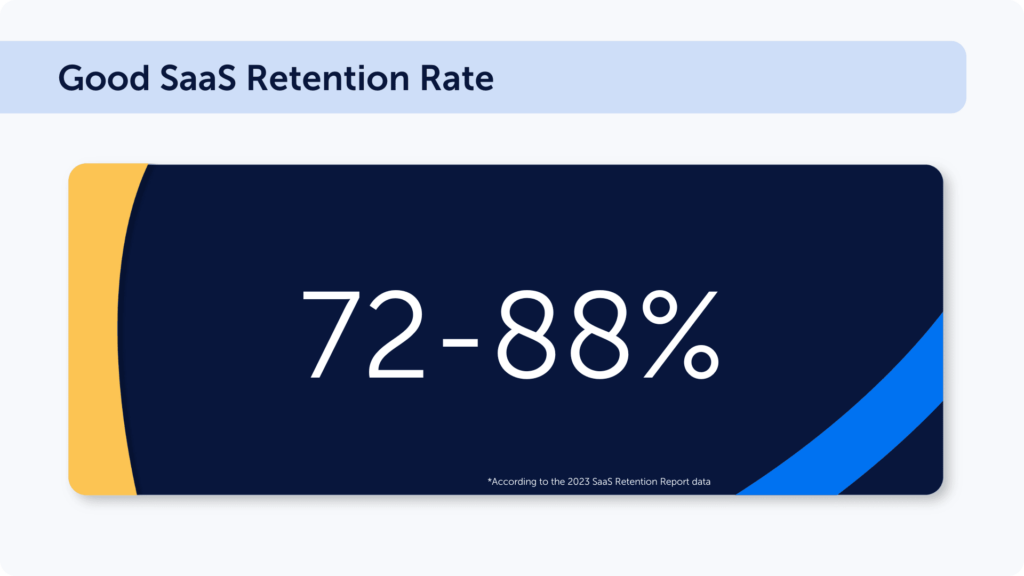
Retention typically depends on the stage of the business and its ARR: younger companies tend to have lower retention rates.
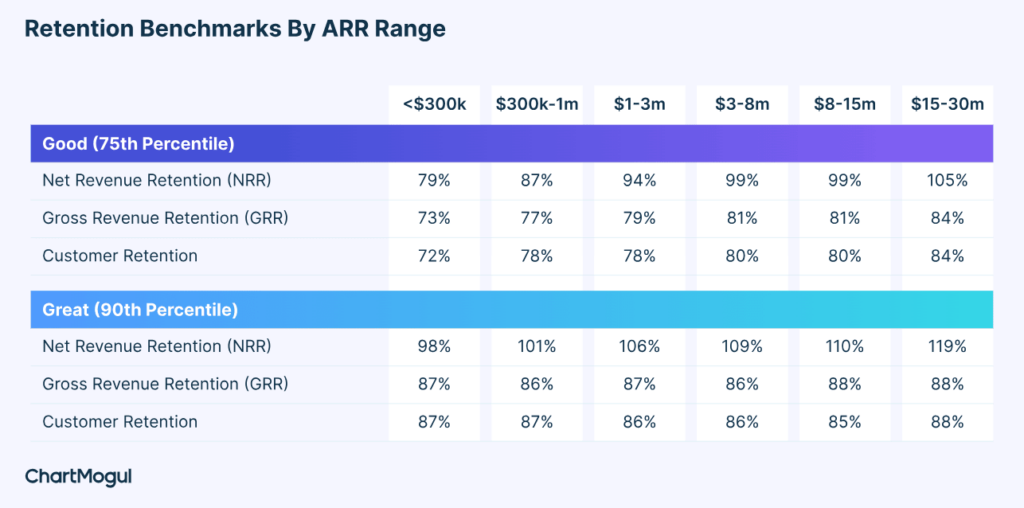
Source: ChartMogul
Strategies to Increase Retention Rate for SaaS
There are over 9,000 SaaS companies in the U.S. alone. Of course, most of them aren’t your competitors, but it’s pretty clear that your customers have plenty of options if they decide to leave.
Your goal is to make sure they don’t even think about it. Here’s the right place to start.
1. Create familiar UX and remove friction
It doesn’t take a complicated interface or bad workflows to create a confusing customer experience that turns users away.
Have you ever heard of the principle of familiarity? Its main idea is that users always prefer interfaces and designs that are familiar to them.
Take this example: a law firm has been using the same old client management system for years. A lawyer-turned-founder, frustrated with legacy software, builds a new system that should be a game-changer for law firms. They successfully sell the product to decision-makers, but adoption rates weren’t great.
When they look into the issue, it turns out that the users, too accustomed to the old system’s workflows and terminology, simply feel lost with the new setup.
Then, they make a simple change—renaming a few buttons. Suddenly, adoption rates soar. It turns out that creating a smooth UX isn’t always aligned with what you think is intuitive—your users may see it differently.
What does it mean for your SaaS business? You’ve got to see your SaaS product through your users’ eyes to truly understand the UX behind your product performance metrics. Tools like Mouseflow let you do it by tracking user behavior as they interact with your app.
Here are two key areas to start your analysis with:
- Friction score. Mouseflow assigns a friction score to each session and each page, based on seven friction events. Sessions with poor scores – marked with unhappy emoji – are the ones to focus on, as are pages with high friction. To get to the sessions with friction quickly, filter the list of session replays by Friction Score -> Unhappy. Similarly, you can sort the list of heatmaps by friction to see which pages create more confusion.
- Session replays. Once you’ve identified problematic sessions, you can watch recordings of user interactions. Did users get stuck clicking an unclickable element? Were they jumping between tabs trying to find a feature? If the same event occurs across different sessions, it’s a clear sign there’s a recurring issue in your UX that needs immediate attention.
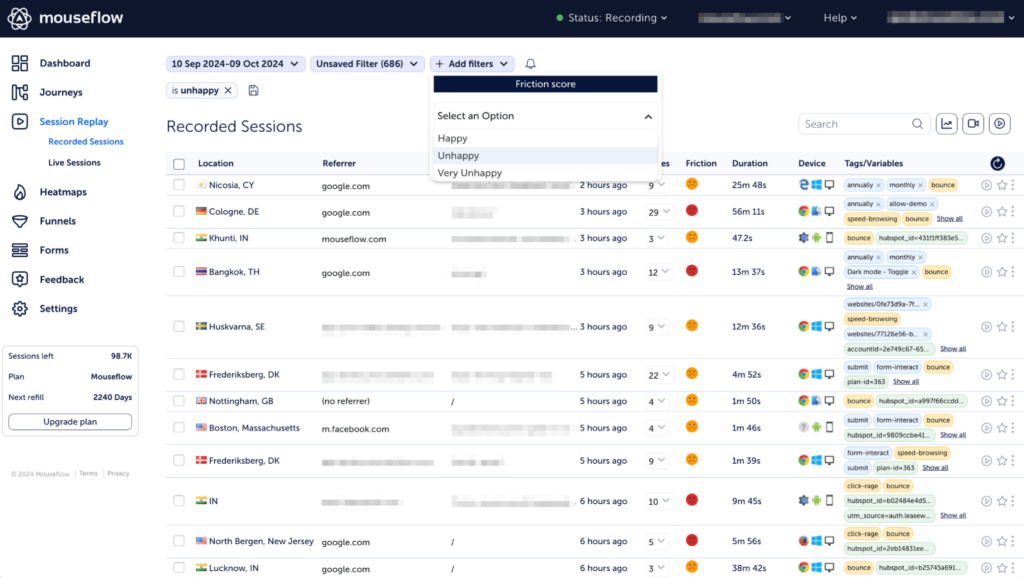
Regularly monitoring UX—especially after product updates—helps you catch and address issues early. Below we’re sharing more strategies that will help you improve your product UX and improve SaaS retention.
2. Make the feedback loops work
You don’t need to be a detective to figure out why users churn. Simply talking to your users can reveal insights you’d never find in the numbers alone—or would take too long to uncover through aggregating statistically significant amounts of data.
Many SaaS companies, especially young ones, use feedback collection forms to encourage users to report issues directly within the app—just like Artisan in the example below. If things don’t work as expected, users can call the “Product Feedback” button on the bottom of the screen and provide a detailed description of an issue (conveniently illustrated by a screenshot).
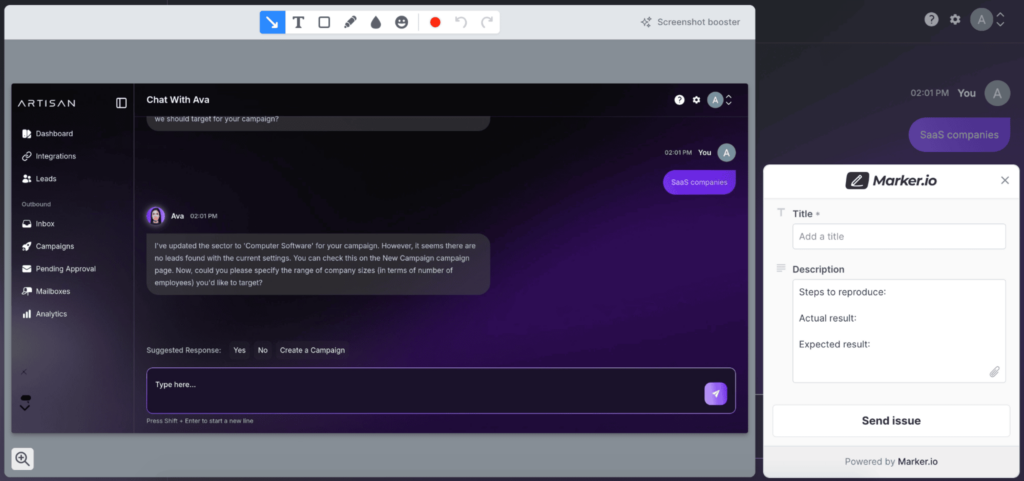
Source: Artisan
That’s a great start, but we recommend that you don’t wait for problems to arise to capture user feedback. Instead, create a feedback loop to keep improving your UX based on continuous flow of user input.
You can start by embedding a simple NPS survey into your product. Ask users how likely they are to recommend your product to others. If the numbers aren’t great, follow up with more targeted surveys to dive into specific features or use open-ended questions to get the full context.
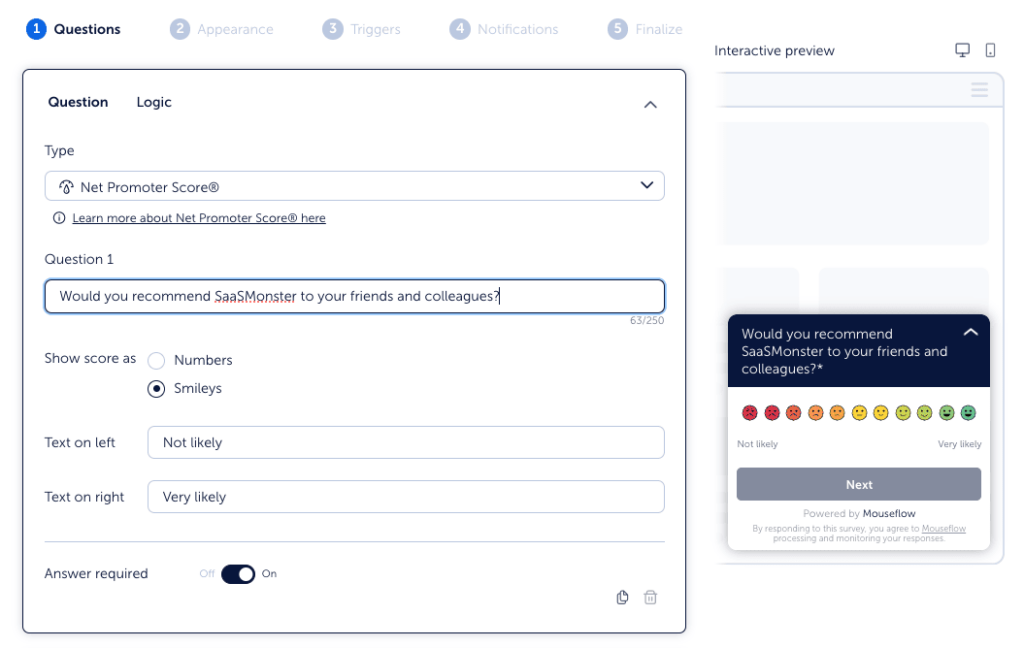
With Mouseflow’s on-page feedback tool, you can embed in-app surveys, whether it’s a quick NPS question, a customer satisfaction score survey, or a multi-step feedback form, at just the right time and place. You can trigger surveys based on user behavior like inactivity, mouse movement, or rage clicks—and best of all, watch the session recordings tied to each response.
Combining behavior analysis from the previous step with an active feedback loop gives you a clear understanding of your UX and a roadmap for improvement.
💡To dive deeper into the topic, check out this blog post on feedback loops for SaaS.
But what if the issue isn’t your product itself? In that case, the following strategies might help.
3. Streamline customer support
The quality of customer service is the second most important factor in driving customer loyalty, right after the quality of your product.
Litmus, an email marketing platform, learned this firsthand. Their support resources were spread across different tools—Intercom for messaging and WordPress for the help center.
By simply centralizing all customer interactions into a single communications platform, the company saw a big improvement: customers who engaged with support in their first three months were retained at a 26% higher rate after making the switch.
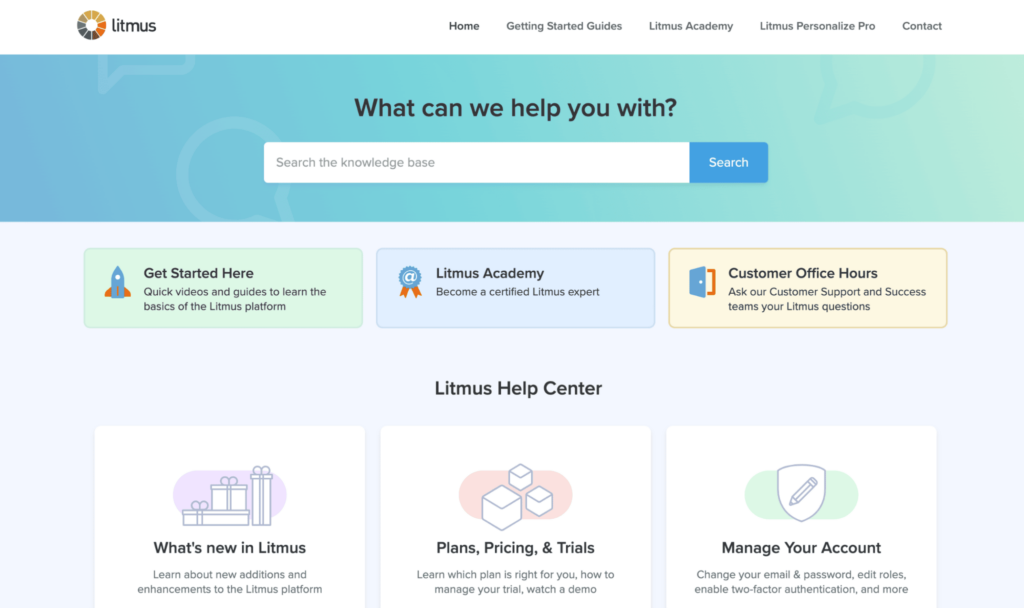
Source: Litmus
So, what exactly drove the change? The new setup brought chat, messaging, and help articles into one place, allowing the team to see the entire customer journey without jumping between platforms. They also automated manual tasks like tagging and ticket movement, freeing up the team to focus on making better support decisions instead of being stuck in routine processes.
Put simply, they streamlined support processes and boosted team efficiency, which had a major impact on user retention. Pretty straightforward, right?
4. Offer self-guided onboarding workflows
Sure, having a knowledge base is a must, but it’s not enough to guarantee a seamless onboarding experience.
We’re talking in-app guidance now.
Surprisingly, many SaaS companies offer little to no guidance to new users, except for high-tier plans that usually include personalized onboarding by customer success representatives. Even IBM, a tech giant, had been offering minimal or no onboarding workflows to their users for years, leading to high abandonment rates and poor subscription growth.
To tackle user churn, IBM introduced onboarding experiences and in-app support across 25 of their products. The team consolidated support resources and created step-by-step on-screen guidance for core features, helping new users get up to speed and reach the key milestones within the IBM products faster.
This move has boosted their retention rate from 50% to over 70%. They also found that users who engaged with in-app guidance were 300% more likely to return to the product a week after their initial login.
How do you integrate in-app guidance into your product experience? There’s no single right way to offer in-app guidance. Some brands provide mandatory step-by-step tours for new users, while others stick to tooltips and popups. Test different approaches to see what level of guidance is most helpful to your audience.
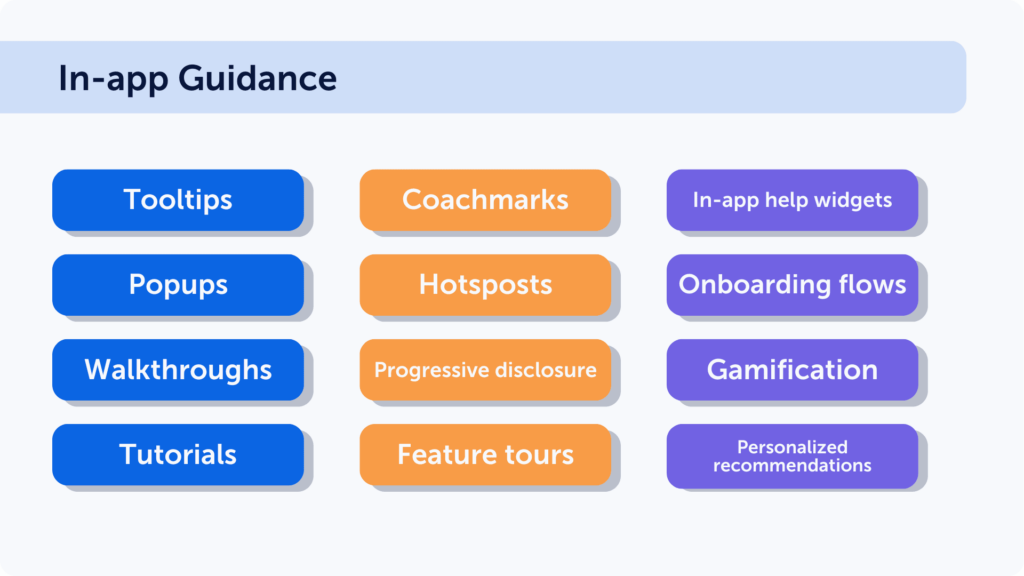
Another good idea for creating an in-app onboarding is trying to replicate some parts of how your customer success team onboards enterprise users using the in-app guidance elements above.
5. Partner up with other vendors
This is definitely the least obvious retention strategy, and that’s why we love it.
People don’t always switch providers because of a bad experience. Often, they just don’t know how to get the most out of the software.
To address this, Teamwork, a SaaS company behind a project management tool, created a Partner Program. This program connects their customers with complementary service providers, helping users maximize the value of Teamwork. Surprisingly, it has appeared to be a powerful driver behind the company’s retained ARR.
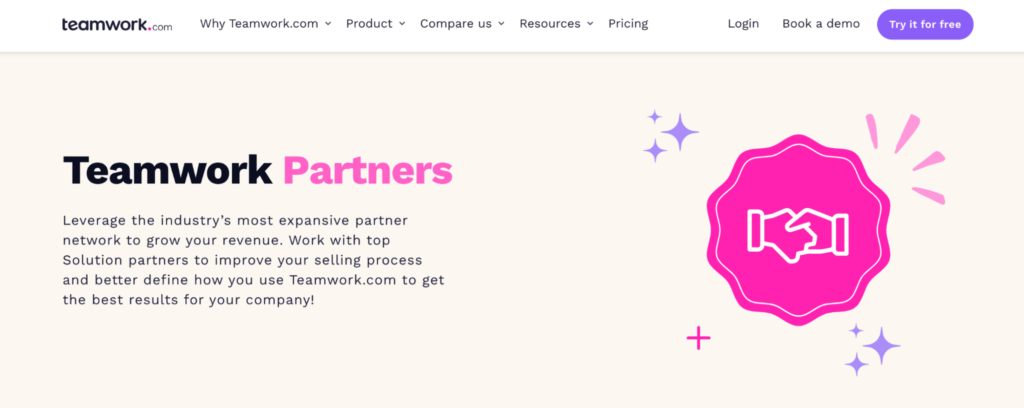
Source: Teamwork
By introducing customers to trusted partners, Teamwork ensures they get everything they need without having to search elsewhere. For instance, one of Teamwork’s partners is an agency that helps businesses update their custom software. Users turn to them for help with developing a process for migrating to Teamwork’s product suite and training all stakeholders on it.
As a result of such cooperation, fewer Teamwork users churn because they face fewer implementation issues and customer LTV increases.
6. Address involuntary churn
Involuntary churn happens when customers unintentionally stop using a service due to issues like failed payments or expired cards—most of which are totally avoidable.
You can reduce involuntary churn by setting up automated reminders that go out before a subscription renewal and right after a failed payment attempt. Choose one or several channels—email, push notifications, in-app messages, or SMS—and watch your retention rate improve.
You’ve likely seen this firsthand with your own subscriptions. YouTube, for example, always makes sure users don’t slip through the cracks. Before the end of a subscription cycle, they send an in-app reminder to update payment details or top up a card if necessary. If the renewal fails, they follow up with a series of emails to ensure the user doesn’t lose access to the service.

Source: YouTube
Start Your Customer Retention Strategy With UX Analysis
Thinking about updating your product design to boost retention? Check the data first. Want to add onboarding workflows to improve activation? Start with the data.
Whatever strategy you choose—whether it’s one of our recommendations or you’ve got your own hypothesis—data should always be your starting point.
UX analysis will uncover what really makes your end users leave—so you can build your SaaS customer retention strategy on a solid foundation. Tools like Mouseflow will help you with it.
